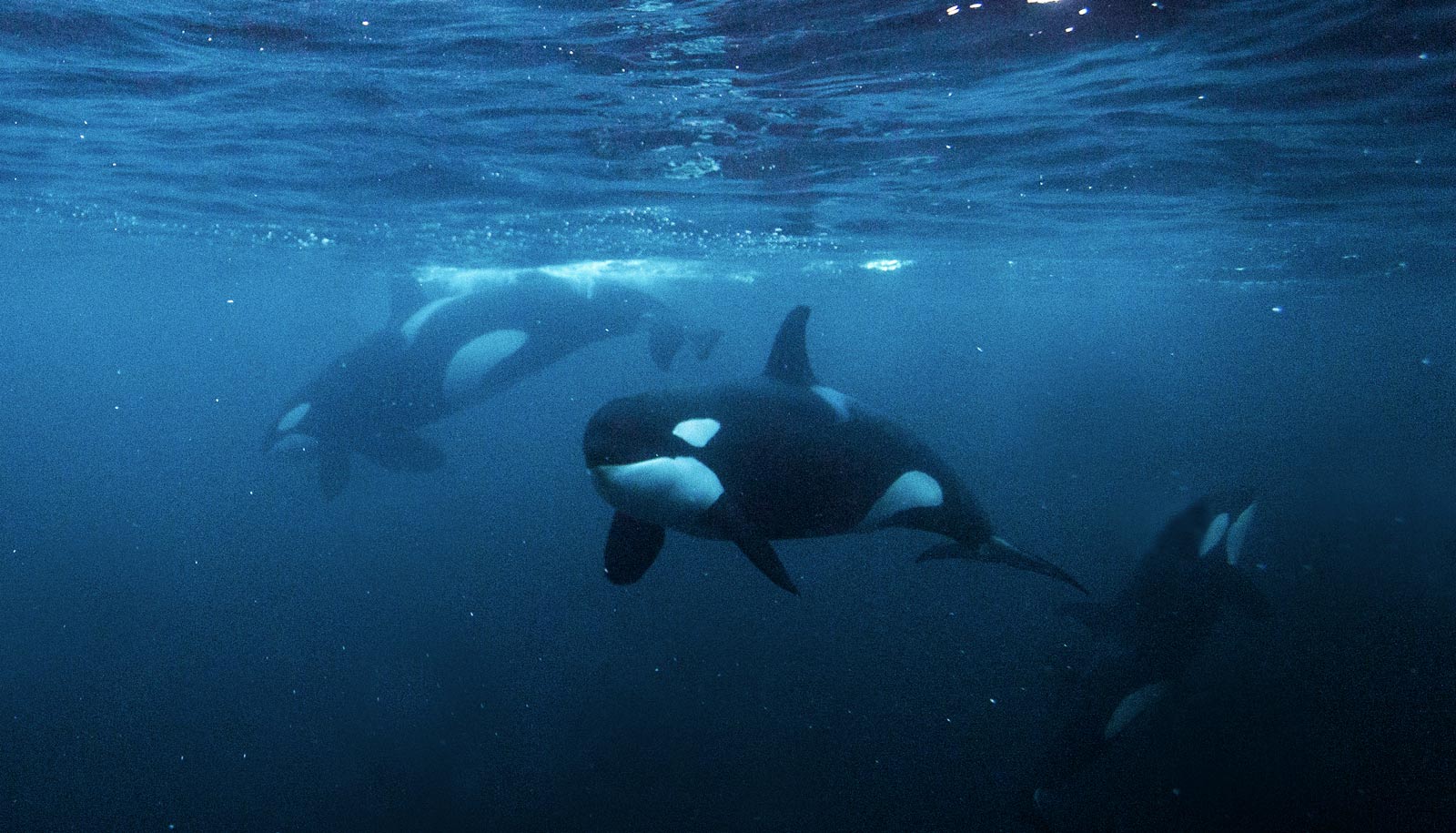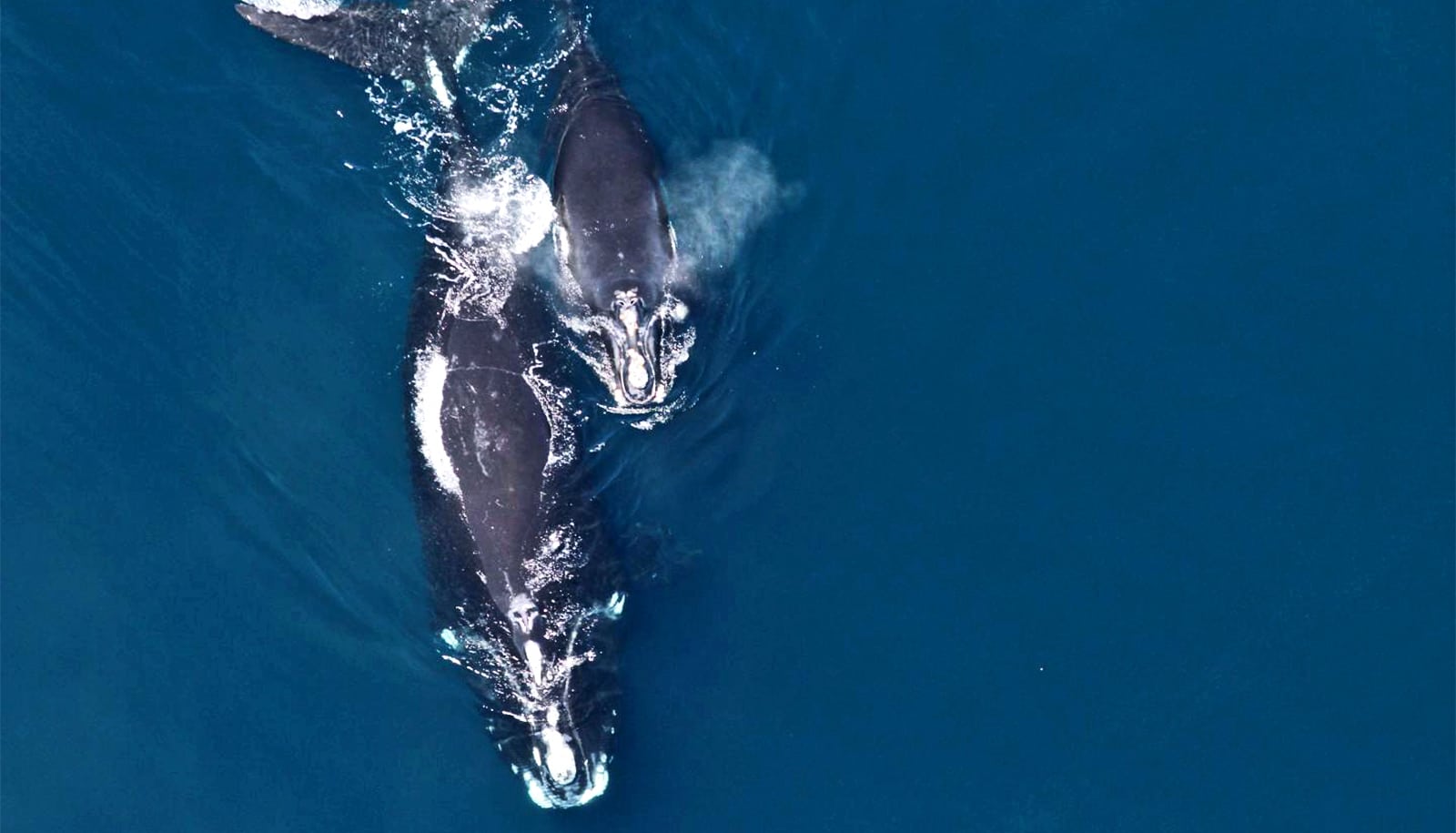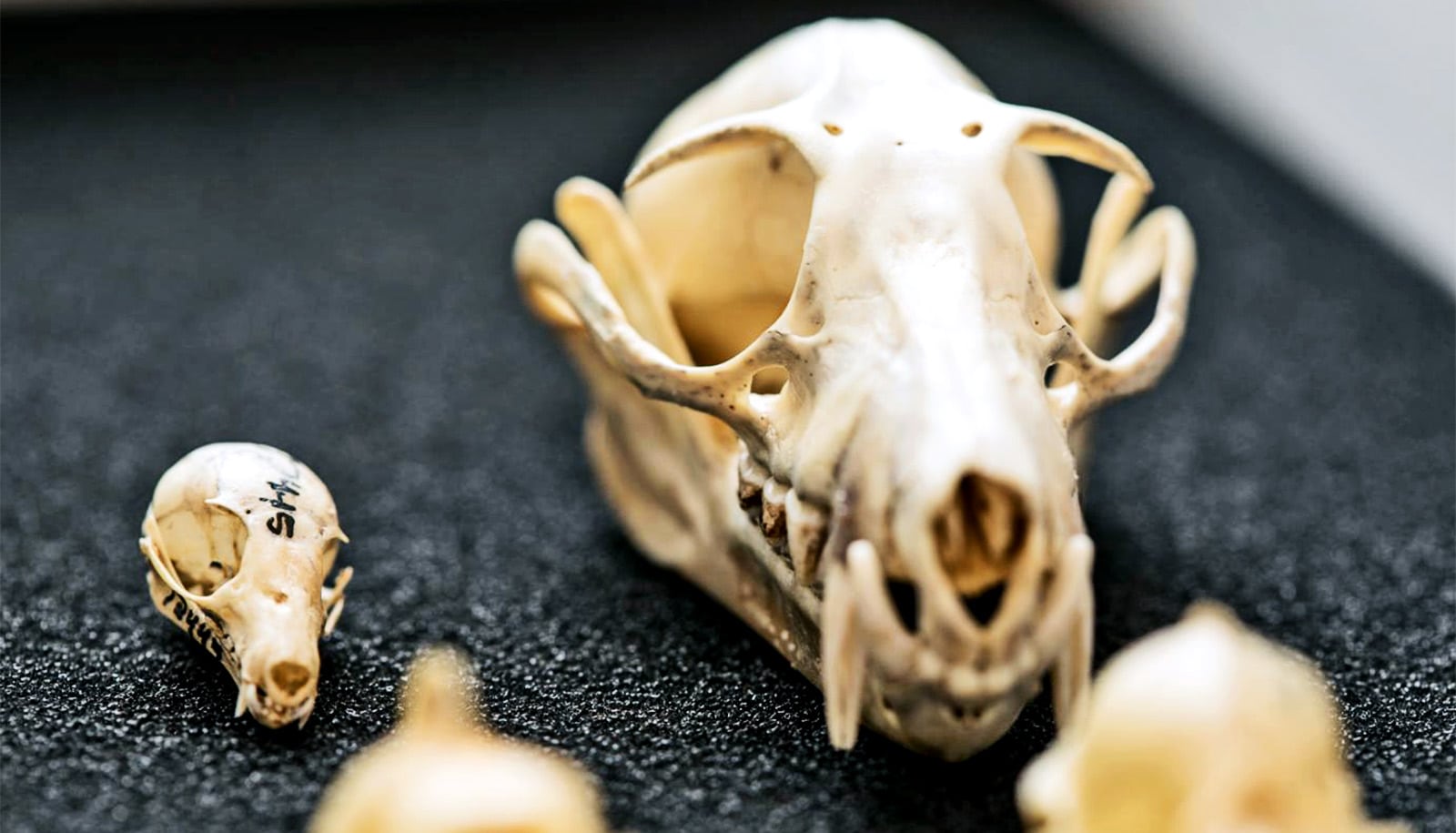Scientists have uncovered genetic similarities among species that use echolocation.
Evolutionary adaptations like echolocation that are shared by unrelated species arose in part due to identical, independently acquired genetic changes, according to the new study.
Insect-eating bats navigate effortlessly in the dark and dolphins and killer whales gobble up prey in murky waters thanks in part to specific changes in a set of 18 genes involved in the development of the cochlear ganglion—a group of nerves that transmit sound from the ear to the brain, according to the new study.
Surprisingly, these very different species evolved their unique ability to use sound waves to navigate and identify obstacles and tasty morsels, be they mosquito or minnow, in part by acquiring identical mutations in their genomes—mutations not shared by other, more closely related species like humpback whales, which patiently sieve the ocean for krill, or fruit bats, which seek stationary, yummy-smelling snacks.
The discovery solves a long-standing biological debate as to whether echolocating bats and whales have independently undergone many similar genomic changes “under the hood” to accomplish the same goal. It also opens the door to understanding more about the molecular basis for human disorders as varied as deafness, skin lesions caused by high cholesterol, and altitude sickness, the researchers say.
“Not only is it breathtaking to see how these very different species carved their own evolutionary niches for themselves through independently acquiring similar genetic changes, it’s beneficial to our understanding of our own physiology and development,” says Gill Bejerano, associate professor of developmental biology, of computer science, of pediatrics, and of biomedical data science at Stanford University.
“Developmental biologists have long wondered whether, at the most basic level, something that’s the same on the outside—like species that use echolocation—are the same on the inside. That is, do they acquire these traits through similar molecular changes? Now we know that not only is this true at least some of the times, but also that many of these changes occur in the coding region of the genome. It’s fascinating.”
Bejerano is the senior author of the study in the Proceedings of the National Academy of Sciences.
A new way to sort through genomes
Although the cochlear ganglion has been previously implicated in the sound-as-GPS technique known as echolocation, past studies have relied primarily on researchers’ intuition to identify possible genetic players based on prior knowledge of their function—a kind of looking-for-your-lost-keys-under-a-lamppost approach. These studies suggested only a few responsible mutations in just four genes involved in hearing.
In contrast, the Stanford researchers developed an unbiased way to sift through whole genome sequences and spotlight concerted genetic changes shared by animals with unusual abilities or traits.
They used the technique to identify genes involved not only in echolocation, but also others critical to the development of the specialized skin of aquatic mammals such as manatees and killer whales, or to the increased lung capacity and function enjoyed by high-altitude animals like pikas and alpacas.
The technique developed by the researchers is likely to open countless doors for biologists seeking to identify the genetic underpinnings of other adaptive traits. The findings also answer yet another hotly debated question in developmental biology.
“For a long time, biologists have wondered whether important evolutionary changes could occur through changes in the sequences of genes that are very similar across related species,” Bejerano says.
“These genes often control multiple functions in different tissues throughout the body, so it seems it would be very difficult to introduce even minor changes. But here we’ve found that not only do these very different species share specific genetic changes, but also that these changes occur in coding sequences.”
Echolocation and the cochlear ganglia
Bejerano and his colleagues developed the technique by searching for instances in which animals sharing unique traits also shared changes in their DNA that are not found in their more closely related peers. To analyze the evolution of echolocation, for example, they compared the genetic sequences of echolocating bats with those of megabats that don’t echolocate, and toothed cetaceans such as dolphins and killer whales with cloven-hooved land mammals. (At the time of the study, whole genome sequences for nonecholocating whales were not available.)
The researchers looked for instances in which the DNA sequences of genes independently changed to encode amino acids that, although identical among echolocating species, differed from the amino acid found at that position in most other mammals.
They then devised a way to determine whether these changes occurred more often than would be expected by chance in particular groups of genes that are predicted to have similar functions. There are about 4,000 groups of genes known to affect the development and function of a large variety of tissues in mammals.
Remarkably, the researchers found that their unbiased analysis homed in on the cochlear ganglion as the single most affected tissue among echolocating mammals. In particular, 25 “convergent” amino acid changes occurred in 18 genes known to be involved in the development of the cochlear ganglion. Only 2 of the 25 changes had been previously identified in past echolocation studies.
“Pulling the cochlear ganglion—a real poster child for the development of echolocation—out of a hat containing more than 4,000 possible gene sets, based on genomic sequence alone, was pretty spectacular,” Bejerano says. “You go from agnostically checking all these different groups to boom, you have a prime suspect jump immediately to the top.”
Finally, the scientists burrowed more deeply into the data to ensure that their tool wouldn’t mistakenly identify instances in which different animals had devolved, or abandoned certain traits when they were no longer required by their environment. To do so they examined the whole genome sequences of different subterranean moles that have lost their vision after millennia in the dark underground.
The National Institutes of Health, the National Science Foundation, a Packard Foundation Fellowship, and a Microsoft Faculty Fellowship supported the work, as did Stanford’s developmental biology department.
Source: Stanford University


